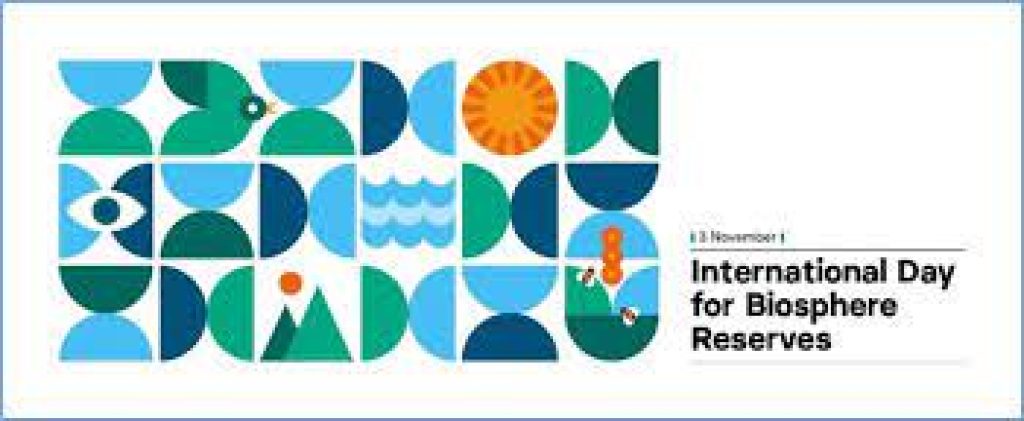International Day for Biosphere Reserve 2023 Celebrated on 3rd November

On November 3, the world celebrates the International Day for Biosphere Reserves, a day established by UNESCO during its 41st General Conference in 2022. This occasion provides an opportunity to understand and appreciate Biosphere Reserves (BR) and their significance in preserving the delicate balance between nature and culture.
Biosphere Reserves play a crucial role in the conservation of our planet’s natural and cultural diversity. On the International Day for Biosphere Reserves, we acknowledge the significance of these reserves in striking a balance between human development, cultural preservation, and environmental protection. As we celebrate this day, we reflect on the need to expand and support these designated areas to safeguard our shared heritage for generations to come.
What Are Biosphere Reserves (BR)?
Overview of BR
- BR is an international designation by UNESCO for representative parts of natural and cultural landscapes that extend across extensive terrestrial or coastal/marine ecosystems or a combination of both.
- Their purpose is to harmonize economic and social development, the preservation of cultural values, and the protection of nature.\BRs are nominated by national governments and remain under the sovereign jurisdiction of the states where they are located.
- Designation Process: These reserves are designated under the intergovernmental Man and the Biosphere (MAB) Programme by the Director-General of UNESCO following decisions made by the MAB International Coordinating Council (MAB ICC).
- Scientific Foundation: The MAB Programme is an intergovernmental scientific initiative striving to establish a scientific basis for enhancing the relationship between people and their environments.
- International Recognition: The status of BRs is internationally recognized.
Three Main Zones of a Biosphere Reserve
Core Areas
Purpose: These are strictly protected zones, playing a pivotal role in the conservation of landscapes, ecosystems, species, and genetic variation.
Buffer Zones
Role: Buffer zones surround or adjoin the core areas and are designated for activities compatible with sound ecological practices. They can reinforce scientific research, monitoring, training, and education.
Transition Area
Function: Transition areas are where communities engage in socio-culturally and ecologically sustainable economic and human activities.
The Status of Biosphere Reserves in India and Worldwide
In India
- India currently boasts 18 notified biosphere reserves, spanning an impressive 60,000 square kilometers.
- Pioneering Reserve: The Nilgiris, encompassing the blue mountains in Tamil Nadu, Karnataka, and Kerala, was India’s first biosphere reserve.
- Size Range: India’s biosphere reserves vary in size, with the Gulf of Kachchh in Gujarat being the largest and Dibru-Saikhowa in Assam the smallest. Other significant reserves include the Gulf of Mannar (Tamil Nadu), Sunderbans (West Bengal), and Cold Desert (Himachal Pradesh).
Around the World
Worldwide Presence: UNESCO recognizes 738 biosphere reserves in 134 countries, including 22 transboundary sites.
Regional Distribution: Europe and North America host the highest number of reserves, followed by Asia and the Pacific, Latin America and the Caribbean, Africa, and Arab states.
South Asia: In South Asia, over 30 biosphere reserves have been established, with the Hurulu Biosphere Reserve in Sri Lanka being the first. Bangladesh, Bhutan, and Nepal have yet to establish biosphere reserves.
Leading Countries: Spain, Russia, and Mexico have the highest number of biosphere reserves.
World’s First 5-Country Biosphere Reserve
Unique Initiative: In September 2021, UNESCO declared the world’s first 5-country biosphere reserve, spanning Austria, Slovenia, Croatia, Hungary, and Serbia. This reserve covers 700 kilometers of the Mura, Drava, and Danube rivers.
Size and Significance: Europe’s largest riverine protected area, this biosphere reserve encompasses almost 1 million hectares and is often referred to as the ‘Amazon of Europe.’